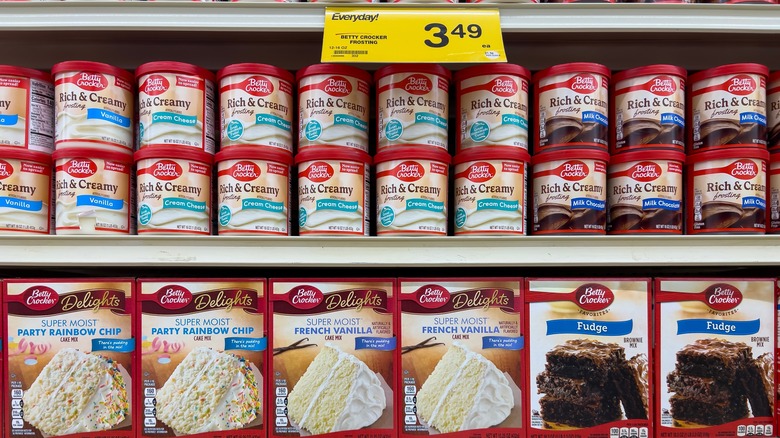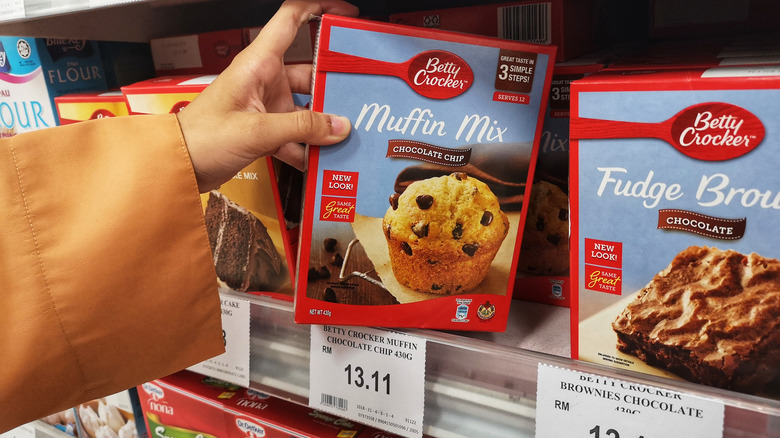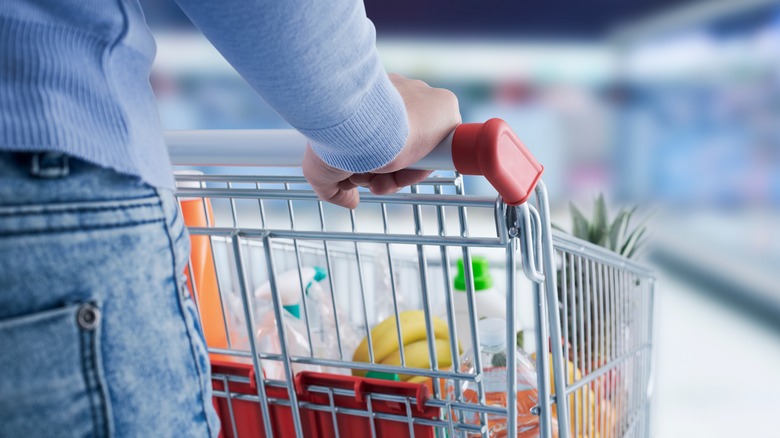The Merchandising 'Perk' You Shouldn't Fall For While Grocery Shopping
Grocery stores are full of everything we could ever want or need — at least on a good day. Finding our favorite items in stock and on sale can give us a "rush," especially if we desperately need them for a recipe we want to make in the near future. But the way stores stock and organize their products often influences what we buy, which can lead to a bit of a shock when the cashier rings up our purchases.
One organizational tool to stay aware of is extremely subtle because, on the surface, it makes logical sense. If everything in the grocery store is located in a sensible place, chances are, you don't even think about the fact that a store's product placement could be a ploy to boost its revenue (via Shopify). However, according to AARP, this "logical" trick is a trap — it could lead to a higher grocery bill total than what you actually budgeted for.
The layout trick that could cost you extra cash
Ever notice that you'll find shortcake cups near the strawberries, and you'll usually spot caramel apple dip by the apples? These "complementary" items seem to be in the perfect spot because they go together, right? Not quite. If you think about it a little longer, you might wonder why shortcake cups and caramel apple dip are often found in the produce section when they definitely aren't fruits or vegetables. Supermarkets rely on the idea that if they stock items that "belong together" near each other, customers will likely buy them together — even if they're only searching for one of the two items, AARP explains.
Known as cross merchandising, supermarkets claim this tactic prevents customers from walking all over the store and completely "forgetting" to purchase icing with their cake mix or instant rice with their can of beans. But what grocery stores don't want you to know is that you may only need one of those items, but with such convenient placement, you're likely to pick up both — after all, who can ever have too many cans of frosting when they're right there? Finding complementary items near each other in the grocery store may seem like a "perk," but it's really just another trick to make sure that you walk out with a few extra items that you only think you need, per Shopify.
How to avoid this merchandising trick
The psychology of grocery store merchandising may seem a little bit complicated, but the best way to avoid this trick is simple: make a grocery list, according to AARP. Before you shop for your groceries, make a list of everything you need at the grocery store, and if you plan on shopping at more than one store in an outing, make separate lists for each. This way, you'll know which store has the lowest price on a certain item, so you won't buy them at the first store you visit unless that store has the best price.
Once you've arrived at the grocery store, stick to the items on your shopping list. Now that you're aware of how "complementary" items are often shelved near each other, you might be able to avoid extra splurges, but the temptation to shell out on items you don't need may still be strong. The solution? Shop systematically, only stopping by the aisles with the products you need. If you think of something you forgot to add to your grocery list but don't need immediately, save it for the next trip. National Geographic states that if something is not on your list right now, don't buy it until it makes its way onto the next shopping list. Just because grocery stores stock "complementary" items near each other don't mean you have to buy them. Now that you know this tactic exists, you can plan in advance to save some extra cash.


